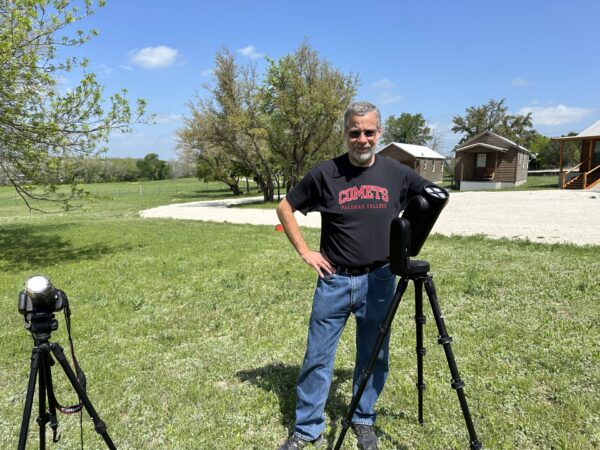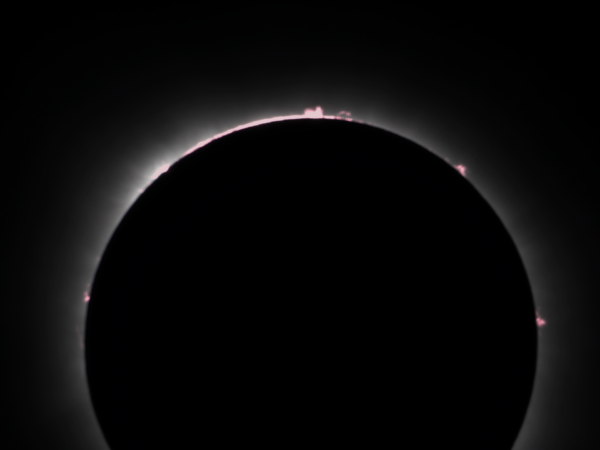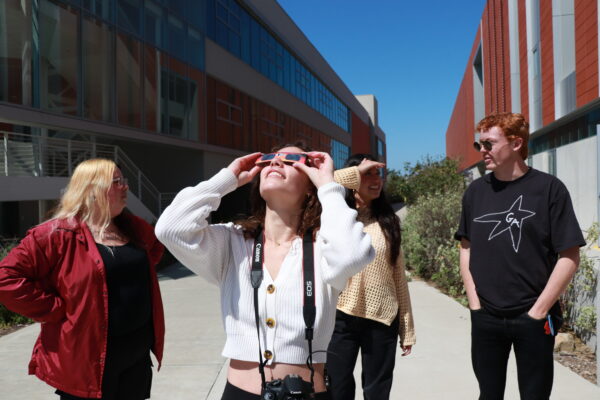A rare celestial event unfolded on April 8, in the United States, captivating the attention of people gathered outside. This was no ordinary occurrence- it was a total solar eclipse. While the Palomar campus in San Marcos didn’t experience totality, the sight was still magical.

One such individual who journeyed to witness this phenomenon was Palomar College astronomy professor Scott Kardel. He traveled to Hamilton, Texas, one of the prime locations to witness the total solar eclipse. Kardel shared his observations as the moon began to cover the sun and the eclipse unfolded.
“As the Moon was moving across the face of the Sun, the lighting outside began to change. The colors and the shadows all look wrong. As totality gets closer, there is a very noticeable drop in the lighting and the temperature. Just before the eclipse was total, I noticed that I could see Venus in the sky well to the right of the Sun.” Kardel said.
“During this time, it is safe to look directly at the eclipse, and the Sun’s beautiful corona becomes visible. It really looks otherworldly. The Sun had several places where huge clouds of red hydrogen gas were visible to the eye.” Kardel said.

In the pictures taken by Kardel, you can see just how incredible the totality is. The corona of the sun becomes visible during a total solar eclipse, which in these pictures is the white ring around the eclipse. You can also see the red hydrogen gas that Kardel describes seeing.
For those who weren’t fortunate enough to travel somewhere to witness the total solar eclipse, it was still an incredible experience. Many students across the Palomar campus gathered outside to watch this magical event. Passing around eclipse glasses to one another, sharing this experience that hasn’t happened since 2017.
“The eclipse was amazing; I know it wasn’t the full thing like in other places, but to be able to see the lighting change and the shadows get different was cool… and putting on the glasses and looking up at the sun and seeing the moon covering part of it was something I’ll never forget.” Daniel Cooley said, a local 20-year-old.

For those who may have missed the solar eclipse this year, don’t worry—your next opportunity to see a total solar eclipse in the U.S. won’t come until August 23, 2044, and this one will only pass over Montana and North Dakota.
In 2045, another total solar eclipse will pass over the United States, reaching Northern California, Nevada, Utah, and Colorado, among other states. What was witnessed on April 8 was a truly rare sight, especially for those fortunate enough to be in a place where totality was present.


Comments are closed, but trackbacks and pingbacks are open.